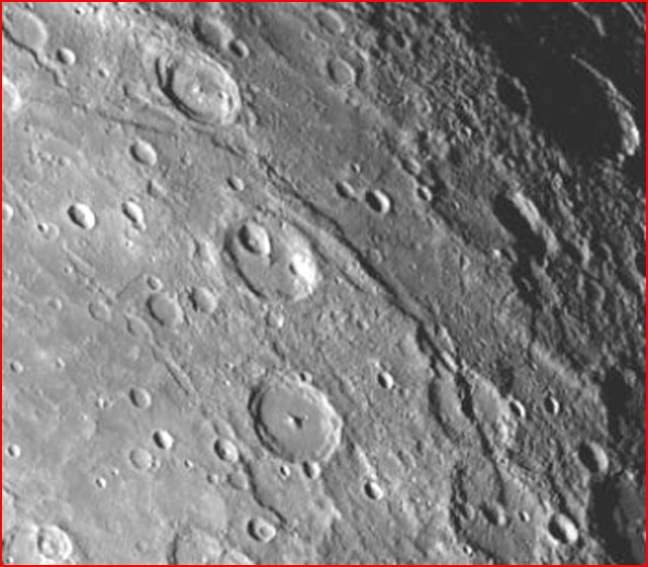On august 3,
2004, NASA launched the Mercury Surface, Space Environment,
Geochemistry and Ranging (MESSENGER) experiment from the
Cape Canaveral facility on a 7-year mission to study the
solar system's innermost planet. On January 14, 2008,
MESSENGER performed an initial flyby of
Mercury, coming within 200 kilometers of the torrid
world.
On March 8,
2011, MESSENGER will enter orbit around Mercury and begin a
multi-year analysis of the surface, the magnetic field and
the planet's core. Mercury, like most bodies in the solar
system, has a weak magnetic field but research scientists
have no idea how its being generated. Earth has a strong
field that helps to protect us from the sun's ionic
bombardment, but Mercury has no such protection. It receives
a continuous blast of radiation and atomic particles that is
almost 1000 times greater than what is measured at the Earth's surface.
A magnetometer
on the satellite should help resolve where the magnetic
field originates. Modern theories suggest that a rotating
"dynamo" of molten metal exists inside Earth and that is how
our magnetic field is created. Mercury is thought to have a
molten core as well, but no one knows if it is working like
Earth does or if the field is part of the crust, like Mars.
No one understands how a molten core exists on Mercury since
the planet appears cold and dead. The molten interior should
have cooled off eons ago.
The last
spacecraft to explore Mercury was Mariner 10 during its tour
of it and Venus. Mariner 10 flew near Mercury in 1974 -
March 29, September 21 and then again on March 16, 1975.
However, because there was no orbital insertion, only about
45% of the surface was revealed by the onboard instruments.
Because MESSENGER is designed to orbit Mercury, mission
specialists hope to find answers to other mysteries left
unanswered for the last 34 years.
Based on its
calculated high density, Mercury is believed to be almost
75% iron surrounded by a thin shell of silicon-rich rock.
Conventional theories of planet formation have no
explanation for such a configuration. If it formed in the
same proto-planetary nebula as the rest of the solar system,
say geophysicists, then the abundance of iron remains a
conundrum because the ratio of iron to silicon is opposite
to the other rocky planets. By interpreting the surface
mineralogical signature of spectrographic data that
MESSENGER will provide scientists hope to decide whether
Mercury was overheated by the sun or was nearly
shattered by an impact--either event removing most of the
silicon from the developing planet.
The Electric
Universe provides a simple yet surprising answer to these
mysteries in "Astronomical
Myths of Mercury and the Sun."
One of the most
intriguing features on Mercury is the
Caloris Basin, a 1300-kilometer "impact" blemish that
supposedly caused shockwaves to pass entirely through the
planet. On the opposite side of Mercury are bizarre folds
and uplifts that are said to be from the antipodal
compression of the crust as the tremendous pressure
partially melted and then re-solidified the strata. The
Caloris Basin resembles other
multi-ringed "impact" structures we have previously
discussed in other Picture of the Day articles.
Shattered and
chaotic
landscape is only one aspect of Mercury's strange
environment. There are sinuous rilles and cliff-faces that
cut through craters. The craters are often hexagonal in
shape, have flat-floors and central peaks or bumps. There is
a marked lack of debris surrounding the
craters, leaving open the question of what happened to
the millions of tons of material that must have been blown
out by meteorite explosions.
Sinuous rilles,
such as the
Rupes Scarp, have long been considered by Electric
Universe theorists to be evidence that electric arcs have
struck planets. As MESSENGER gradually settles-in to its
2011 orbital observation more data should help to
demonstrate that Mercury's structure and features could be
the result of electrical activity on a enormous scale.
By Stephen Smith







